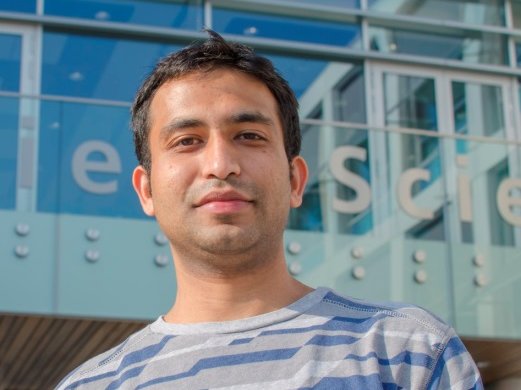Aditya Kulkarni, MSc
I started my PhD in 2014 under the supervision of Prof. dr. Laurens. D. A. Siebbeles. Before joining for research at TU Delft, I pursued Bachelors and Masters in physics at Sathya Sai Institute of Higher Learning, India. After completing my masters, I worked on a project at Tata Institute of Fundamental Research, Hyderabad, India to develop a mesoscopic particle generator for light-matter interaction studies. Currently, my research aims at understanding the dynamics of charge carriers and excitons, the mobility of charges and carrier multiplication efficiency in low dimensional semiconductors by using optical pump-terahertz probe spectroscopy.
Project description
My research aims at understanding the dynamics of charge carriers and excitons in semiconductor nanorods, nanosheets and quantum dot superlattices with square or honeycomb nano-geometry. Particular attention is paid to carrier multiplication and charge carrier mobility.
Photoexcitation of a semiconductor can lead to formation of free charges and/or neutral excitons. To determine the nature and dynamics of photogenerated species, we use optical pump – terahertz (THz) probe time domain spectroscopy. The samples are photo-excited with optical pump pulses of various photon energies and probed with a single cycle THz electric field. The contact-less THz conductivity measurements provide the intrinsic mobility of charge carriers moving within a nanomaterial without detrimental effects of long-range disorder or electrode contacts. Studies of the yield of charges/excitons as a function of photon energy give information about the efficiency of carrier multiplication; i.e. the generation of two or more electron-hole pairs for the absorption of one photon. The decrease of the THz conductivity during time reflects the decay of charges and excitons via recombination or trapping.
Understanding the nature of photogenerated species, the mobility of charges and carrier multiplication efficiency is of use to give direction to development of new nanomaterials for efficient optoelectronic devices.

- a.kulkarni@tudelft.nl
-
Building 58
Van der Maasweg 9
NL-2629 HZ Delft